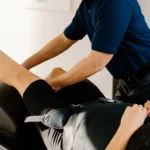A cartilage injury can be a significant concern for athletes of all levels. This resilient tissue covers the ends of bones within joints, allowing for smooth, fluid movement. When this tissue is damaged, it can affect an athlete’s mobility and performance. Understanding the basics of these injuries helps you recognize potential issues and seek appropriate guidance for managing them.
What Causes Cartilage Injury?
Athletes place high demands on their joints, which can lead to damage. A direct impact, like a fall or a collision during a game, may cause a piece of cartilage to break off. Repetitive stress from activities like running or jumping also contributes to the gradual wear and tear of the cartilage surface over time.
Joint instability is another factor. When ligaments are sprained or torn, the joint loses some of its structural support. This lack of stability can lead to abnormal movement, placing uneven pressure on the cartilage and increasing the risk of a cartilage injury. An athlete’s body mechanics and alignment play a part in how forces are distributed across the joints during physical activity.
What Are Symptoms?
The signs of a cartilage injury may sometimes be subtle, but they tend to become more noticeable during or after physical activity. Paying attention to how your body feels is a good first step in identifying a potential problem. You might notice one or more of the following signs:
- Joint pain: This is often a dull ache that can sharpen with movement, especially when bearing weight on the affected joint.
- Swelling: The joint may appear puffy or feel tight due to fluid accumulation, a condition sometimes referred to as “water on the knee.”
- Stiffness: You may find it difficult to move the joint through its full range of motion, particularly after periods of rest.
- Catching or locking: A sensation of the joint getting stuck or locking in place during movement can occur if a loose piece of cartilage interferes with the joint’s mechanics.
- Grinding sensation: You might feel or hear a grating noise, known as crepitus, when you move the joint.
These symptoms may develop slowly or appear suddenly after a specific incident. Keeping track of what you feel and when you think it provides helpful information when discussing the issue with a professional.
How Are Cartilage Injuries Managed?
The approach to managing a cartilage injury depends on its specific nature and an individual’s activity goals. The initial step often involves modifying activities to reduce stress on the affected joint. This may involve temporarily pausing high-impact sports and substituting them with low-impact exercises, such as swimming or cycling, to maintain fitness without aggravating the joint.
Physical therapy is a common component of a management plan. A physical therapist can guide you through exercises designed to strengthen the muscles surrounding the joint. Stronger muscles provide better support and can help absorb some of the shock that would otherwise be placed on the joint cartilage. These exercises also aim to restore flexibility and range of motion. Other management options might be discussed with a healthcare provider based on your unique situation.
Consult a Specialist
Recognizing and addressing a potential cartilage injury is a proactive step toward protecting your joint health. If you are experiencing persistent joint pain, swelling, or other symptoms, consulting a specialist is a helpful next step. A medical professional can provide a thorough evaluation of your joint and discuss a personalized management plan. Taking action allows you to get clear guidance tailored to your needs and athletic goals.









